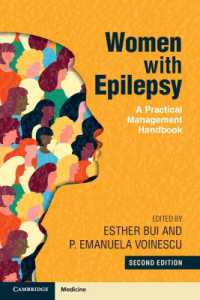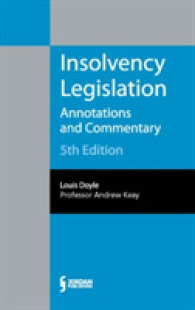- ホーム
- > 洋書
- > 英文書
- > Literary Criticism
基本説明
The English literary tradition has been constituted as a patriarchal family. Great fathers are supposed to pass on a place to worthy sons, and the status of women's writing within the canon is contested. This book shows how kinship and mentoring relationships between writers helped to form the national tradition. Writers featured include Dryden, Congreve, Johnson, Burney, the Fieldings, the Wordsworths, and Austen.
Full Description
Literary Relations argues that kinship relations between writers, both literal and figurative, played a central part in the creation of a national tradition of English literature. Through studies of writing relationships, including those between William and Dorothy Wordsworth, Henry and Sarah Fielding, Frances and Richard Brinsley Sheridan, and Mary Wollstonecraft and Mary Shelley, it shows that kinship between writers played a significant role not just in individual lives but in the formation of generic traditions. As writers looked back to founding fathers, and hoped to have writing sons, the literary tradition was modelled on the patriarchal family, imagined in tropes of genealogy and inheritance. This marginalized but did not exclude women, and the study ranges from the work of Dryden, with its emphasis on literature as patrilineal inheritance, to the reception of Austen, which shows uneven but significant progress towards understanding the woman writer as an inheriting daughter and generative mother.
Contents
1. Fathers and Mentors ; 2. The Mighty Mother ; 3. Brothers, Sisters, and New Provinces of Writing ; 4. Women in the Literary Family






